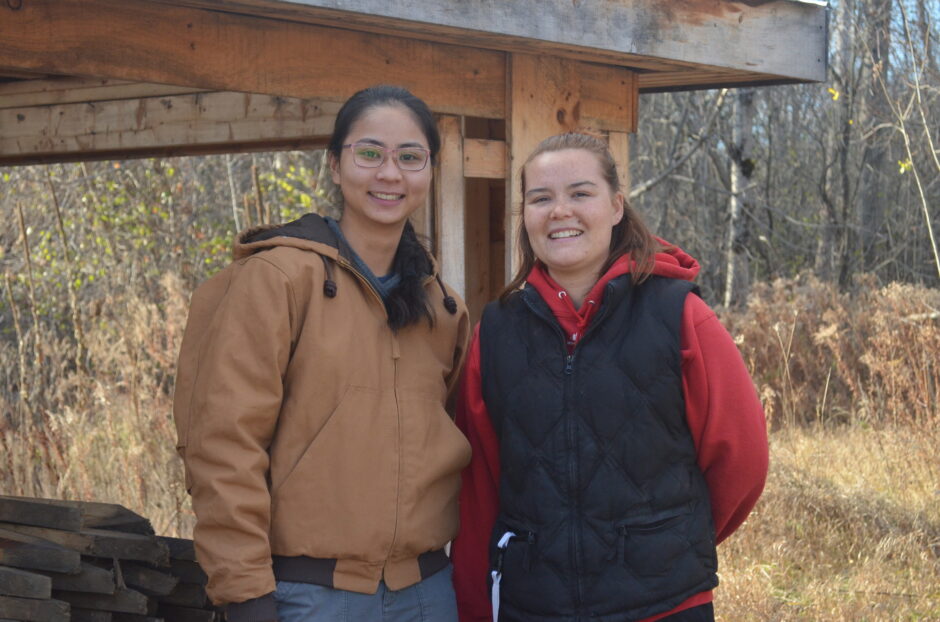Explorer: Ottawa Art Gallery show tells an untold story in Canadian history

During the Second World War, the Canadian government detained approximately 22,000 Japanese-Canadians for security concerns. These individuals were forcibly relocated, suffering a loss of property and civil rights.
“Because of the nature of Japanese culture, people have not talked about this history a lot,” said Catherine Sinclair, one of three curators of Shapes In Between, an exhibit at the Ottawa Art Gallery showcasing work by Japanese-Canadian Norman Takeuchi. “Even young Japanese-Canadians don’t even know a lot about this history, because their parents or grandparents don’t talk about.”
The exhibit showcases Takeuchi’s remarkable works of art and is a place for his story and other social injustices to be told.
“It’s because it’s shameful still,” said Sinclair. “Art is a cool way to get into a topic people just should know about. “
Takeuchi has been painting since his time as a young artist attending the Vancouver School of Art in 1957 and has put an increasing emphasis over the course of his career to really engage with his own heritage and to accept the legacy of his ancestors. He has created various types of art pieces ranging from graphic art to abstract art and everything in between to convey his message.
“Norman was part of the founding group of artists to create the Ottawa Art Gallery,” said Sinclair. “He never had a retrospective exhibition, so it was an absolute pleasure to be able to finally work with him so that we could bring it all together to really tell his story and the story of his art. It’s very well deserved after a long career and contribution to Ottawa.”
The abstract style of painting is one that strongly appeals to Takeuchi. In Takeuchi’s mind, the abstraction represents him. The title of this show comes from this style of painting and is at the crux of this exhibit.
“The title of the show actually came from the abstraction,” said Sinclair.
Bryce Kanbara, one of the other curators of the show along with Sachiko Okuda, asked Takeuchi in the studio about his artistic style with regard to a specific painting, explained Sinclair.
When he was asked “Where do you find yourself in this painting?” Takeuchi replied, “In the shapes in between,” she said.
After careful consideration from curators in trying to pick which art pieces of nearly 300 artworks should be displayed and collaboration with Takeuchi himself, this exhibit was finally opened on April 1, 2023. Why should you visit?
1. Shapes In Between is an exhibit that cultivates deep philosophical thinking.
It compiles all of Takeuchi’s best work – approximately 60 years worth of art pieces – and is curated by people who have strong knowledge of his artistic vision and the story he wants his work to tell.
2. It offers the chance to learn about Canada’s history through an artistic lens.
The Shapes In Between offers a way to learn about a significant part of Canada’s history in an interactive and engaging way.
“I think art is a very powerful way to show histories that people are not as aware of,” said Sinclair.
It will show you components of the Japanese-Canadian internment in a way that paints a vivid picture in your mind almost as if you were there at that time.
3. It’s a cost-Free exhibit.
This exhibit is completely free and available to visit Tuesday to Sunday and will remain on show until March 2024.
4. The exhibit unveils many eras and a multitude of themes that symbolize Takeuchi’s works over the course of his career.
There are seven distinct themes to explore including abstraction, depictions of global violence, reflections on Japanese heritage, narratives related to the Japanese internment during World War II, graphic art and more.
5. The art is very thought-provoking and forces you to analyze the attention to detail put into each piece of art.
This exhibit naturally stimulates a thought-provoking experience. Each artwork demands analysis both on the elements of its creation and connecting with the message of the artist.
6. The exhibit has drawn a lot of public interest and caters to any age demographic.
This exhibit has drawn a lot of positive feedback and commendations and has become a popular exhibit at the OAG.
“We’ve had some amazing responses to this show, particularly from people of colour especially people from the younger generation,” said Sinclair.








